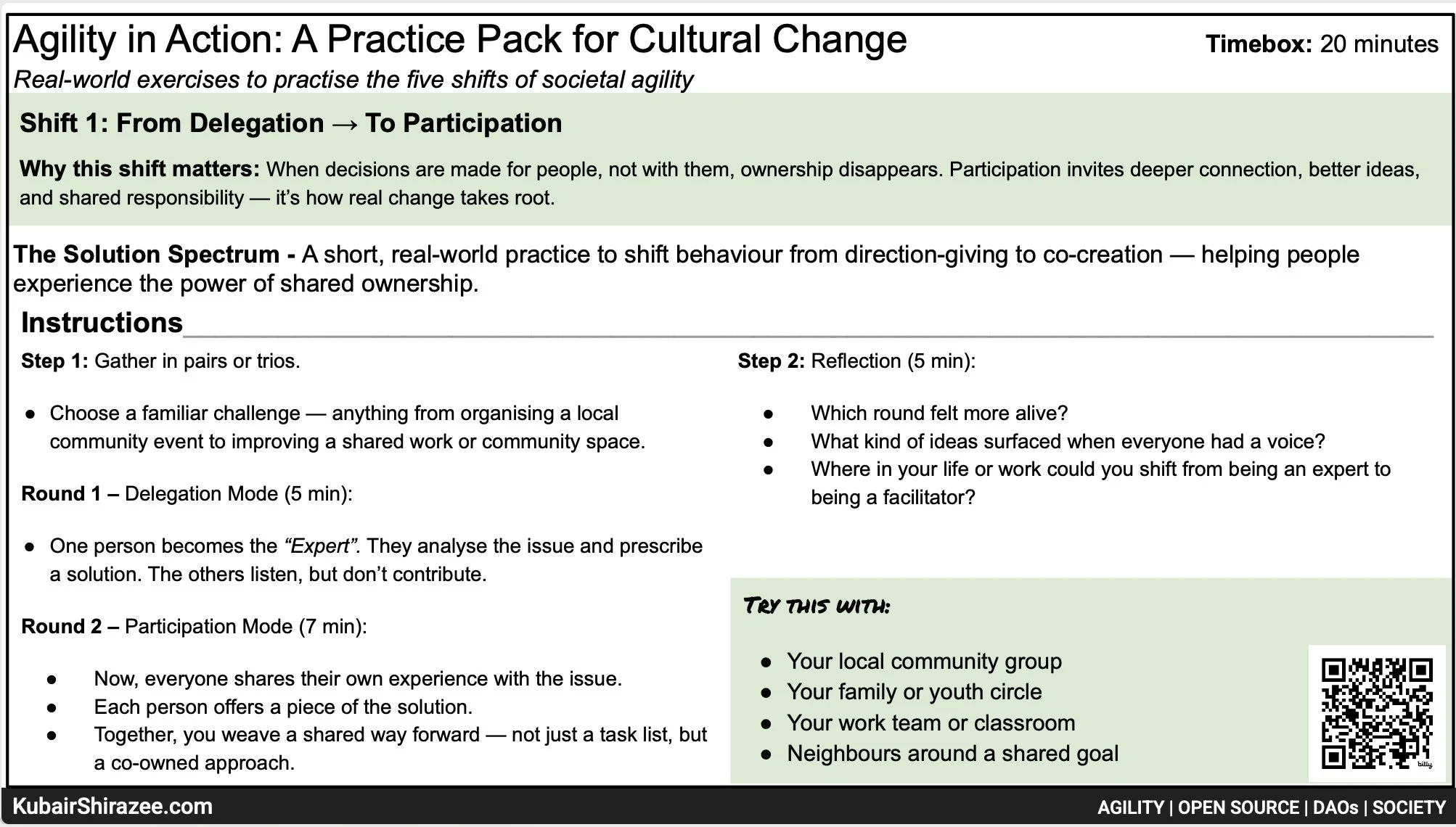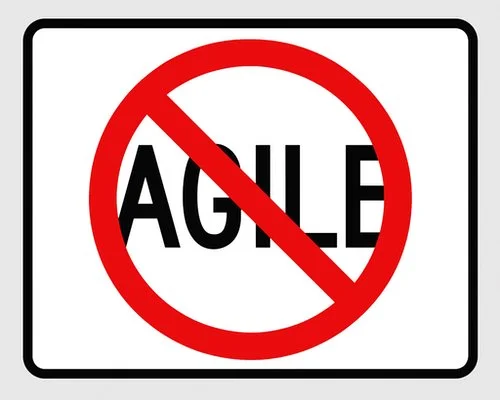Practising the Shift: Bringing Societal Agility to Life
In a recent piece, I wrote about what societal agility looks like when we stop trying to impose it and start letting it emerge — from the ground up, through how we show up with one another in the everyday.
👉 If you haven’t read it yet, here’s the blog that sparked this series:
What Societal Agility Looks Like
In that piece, I shared five core cultural shifts that help communities — and organisations — become more adaptive, resilient, and human-centred. These shifts aren’t theoretical. They’re deeply practical. But more importantly, they’re relational — they’re about how we show up, how we interact, how we make decisions together.
But reading about a shift is one thing.
Practising it is another.
So I’m sharing five real-world exercises, one for each shift.
These aren’t tools in a framework or steps in a model.
They’re small, human practices you can try in everyday spaces, with your team, your family, your youth circle, your community group, or your neighbours.
Each one is an invitation to try something different, to experience the shift, not just understand it.
Shift 1: From Delegation → To Participation
We often assume that being helpful means taking charge.
That leadership means having the answers and assigning tasks.
But too often, that approach creates distance — not connection.
Participation doesn’t just mean getting the job done.
It means shaping the purpose together. Owning the outcomes together.
It means being seen, being heard, and being involved from the start.
Here’s a simple practice that brings that shift to life:
🌀 The Solution Spectrum
A short, real-world exercise designed to help people feel the difference between being told and being included — from direction-giving to shared ownership.
✅ Works in pairs or trios
🕒 20 minutes
👉 Click here to view or download the full practice card
Shift 2: From Debate → To Dialogue
We’re often taught to listen so we can respond.
To argue. To be right.
But dialogue invites something deeper: understanding.
When we slow down, when we stay curious instead of certain — we stop reacting, and start relating.
That’s the heart of dialogue.
Here’s a practice to try it out:
🗣️ The Listening Circle
A short, real-world exercise to shift behaviour from reacting to relating — helping people experience the power of understanding over argument.
✅ Great for teams, families, or any group working through tension
🕒 25 minutes
👉 Click here to view or download the full practice card
Shift 3: From Perfection → To Experimentation
Perfection delays progress. It keeps us refining in isolation instead of learning in motion.
Experimentation invites us to test early, fail safely, and adapt quickly. It replaces the pressure to get it right with permission to try, learn, and evolve.
Here’s a simple practice that brings this shift to life:
🧪 The Lighter Lift
A short, real-world practice to shift behaviour from waiting for the perfect plan to trying a small, imperfect step — helping people experience the power of safe-to-fail experimentation.
✅ Ideal for individuals or small teams
🕒 25 minutes
👉 Click here to view or download the full practice card
........................
Over the coming weeks, we’ll add two more shifts, and practices, that continue this journey:
Shift 4: From Control → To Trust
Shift 5: From Defending → To Learning
Each one is designed to be accessible, real, and adaptable, because agility doesn’t start in the boardroom. It starts in how we gather, how we co-create, and how we grow together.
Try the exercises.
See what shifts.
And if something meaningful emerges, I’d love to hear about it.
What did it spark?
What surprised you?
What might you try differently next time?
Because this work isn’t theoretical.
It’s relational.
And it starts in how we practise — together.
Thank you for reading. If you’re new here, I’m Kubair Shirazee, I help people, teams, organisations and communities navigate past the status quo and explore better ways of collaborating and delivering impact.













